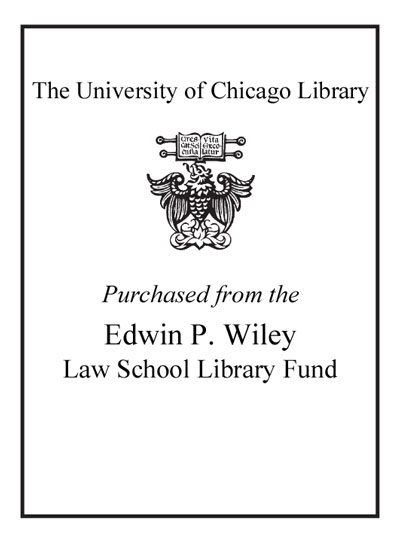Recruiting lawyers : how to hire the best talent /
Saved in:
| Author / Creator: | Manch, Susan G., author. |
|---|---|
| Edition: | Second edition. |
| Imprint: | Chicago, Illinois : ABA Law Practice Division, ©2015. |
| Description: | xi, 116 pages : illustrations, forms ; 23 cm |
| Language: | English |
| Subject: | |
| Format: | Print Book |
| URL for this record: | http://pi.lib.uchicago.edu/1001/cat/bib/10363722 |
| Related Items: | Revision of:
Recruiting lawyers. |
Table of Contents:
- Preface
- Chapter 1. Step 1: Assessment-Taking Stock
- Section I. Are You Ready?
- Section II. Workforce Planning
- Section III. Evaluating Your Firm's Needs
- Connecting Recruitment Philosophy to the Firm's Strategic Plan
- Assessing the Effectiveness of Recruitment Process and Protocol
- Comparing Entry-level and Lateral Hiring Trends
- Section IV. How Many to Hire?
- Nature of the Practice
- Size of the Firm
- Developmental Culture of the Firm
- Final Thoughts on Defining Hiring Needs
- Section V. Looking beyond Traditional Associate, Counsel, and Partner Roles
- Contract Lawyers
- Staff Attorneys
- Part-Time or Flexible-Schedule Lawyers
- Final Suggestions on Alternative Hiring Options
- Chapter 2. Step 1: Assessment-Taking the First Steps
- Section I. Developing a Hiring Protocol
- Section II. Formulating Selection Criteria
- Using the "What-Why-Who Model"
- Section III. Developing Position Descriptions for All Lawyer Roles
- Details, Details, Details
- Chapter 3. Step 2: Attracting Top Talent
- Section I. Positioning the Firm as an Employer of Choice
- Section II. Communicating Culture in Marketing Media and Outreach
- Defining the Firm's Recruiting Message
- Creating a Market Image for Your Firm
- Section III. Using Search Firms Effectively
- Flow Does a Search Firm Work?
- Benefits of Using a Search Firm
- Practical Strategies
- Section IV. Working with Law School Career Services Offices
- Listing Positions
- Conducting On-Campus or Off-Campus Interview Programs
- Participating in Consortium Interview Programs
- Connecting with Law School Alumni
- Serving on Panels and Attending Networking Events
- Section V. Identifying Local and Other Resources
- Local Bar Associations
- Online Classified Advertisements in Newspapers and Journals
- Beyond the Obvious
- Chapter 4. Step 3: Screening and Interviewing
- Applicants-Effective Screening Practices
- Section I. Evaluating the Resume
- Evaluating the Resume, Part 2
- Applying Selection Criteria to the Resume
- Section II. Utilizing Transcripts, Writing Samples, and Other Screening Tools
- Transcripts
- Undergraduate/Graduate School Transcripts
- Writing Samples
- Survey of Engagements
- Business or Practice Development Plan
- References
- Assessments
- Social Media
- Internal References
- The "Gut Reaction"
- Summary
- Chapter 5. Step 3: Screening and Interviewing Applicants-Conducting a Thorough and Engaging Interview
- Section I. Determining the Most Effective Approach to Candidate Interviewing
- On-Campus Interviews
- Types of Interviews
- Section II. Addressing Logistical Considerations
- The Logistics of the Screening Interview
- Selecting interviewers
- Characteristics of Exceptional Interviewers
- Other Logistical Considerations of the Screening Interview
- The Logistics of Callback, or Second, Interviews
- Practical Strategies
- Section III. Developing the Interview Plan
- The Interview Format
- Five Phases of an Interview
- A Sample Interview Plan
- Section IV. Developing Effective Questions
- Phrasing
- Content
- Timing
- Section V. Employing Risk Management Tactics for Interviewers
- Inappropriate, /Regal, or Insensitive Questions
- Section VI. Setting the Stage to Get Substantive Feedback on Candidates
- Chapter 6. Step 4: Making Effective Hiring Decisions-Art and Science
- Section I. The Art-Gathering and Making Sense of the Feedback
- Section II. The Science-Getting the Details Right
- Checking References
- Conducting the Reference Call
- Verifying Factual Dam
- Pursuing Additional Information
- The Decision-making Process
- Making the Offer
- Timing the Offer
- Discussing the Offer with the Candidate
- Learning from Rejection-Candidate Surveys
- Section III. The Art-Preparing the Way for Successful Onboarding
- Integration Basics
- Chapter 7. Step 4: Making Effective Hiring Decisions-Basic Employment Law Issues in Recruiting
- Section I. Overview
- A Litigious Society
- Section II. Common Employment, Litigation Claims
- Section III. Planning for Your Lawyer Hiring Process
- Employment Applications
- Position Descriptions/Advertisements
- The Interview Process
- Questions to Avoid
- The Selection Process
- The Reference-Checking Phase
- The Communication of the Offer
- Employee Handbooks and Written Policies
- Section IV. The Americans with Disabilities Act
- Section V. A Few Words About Insurance
- Section VI. Summary of Basic Issues
- Disclaimer
- Summary
- About the Authors
- Index

